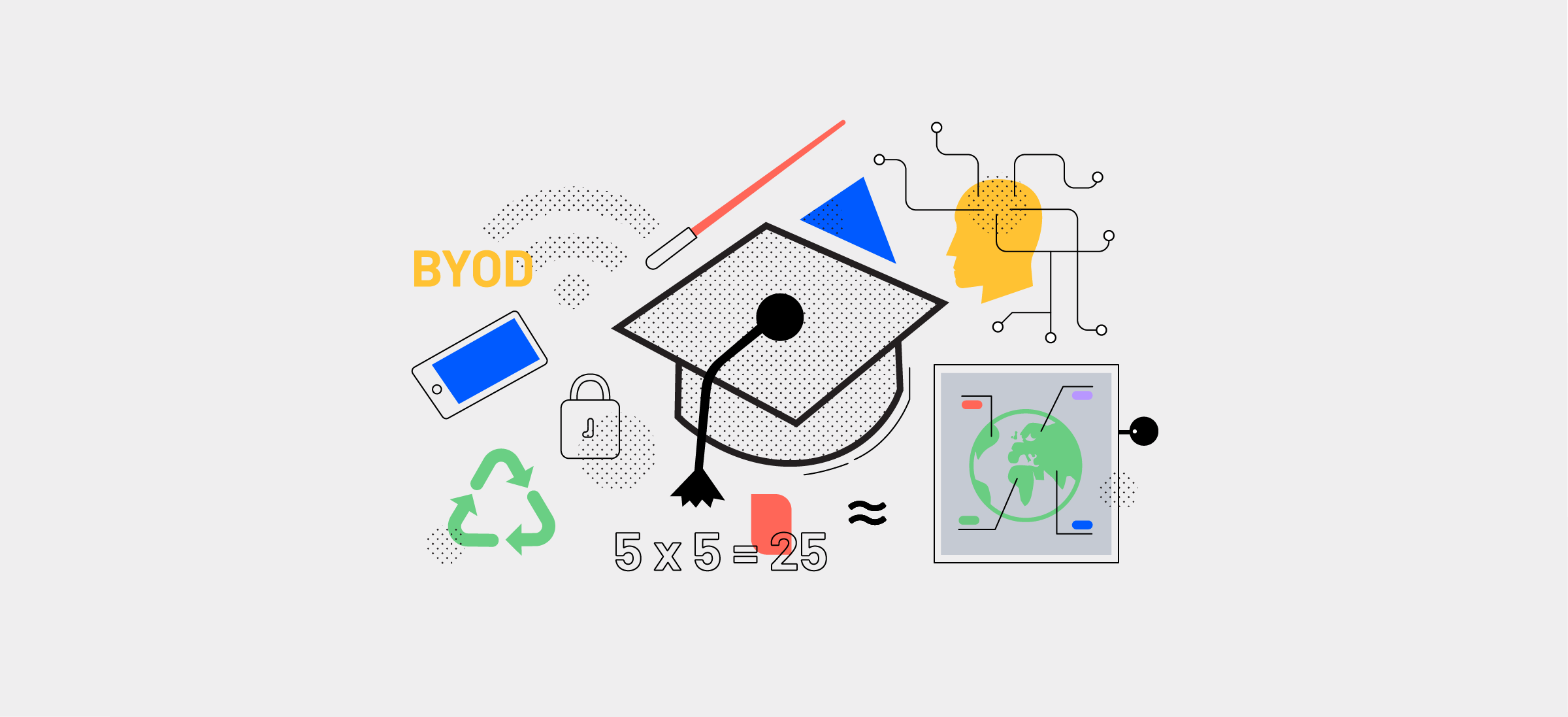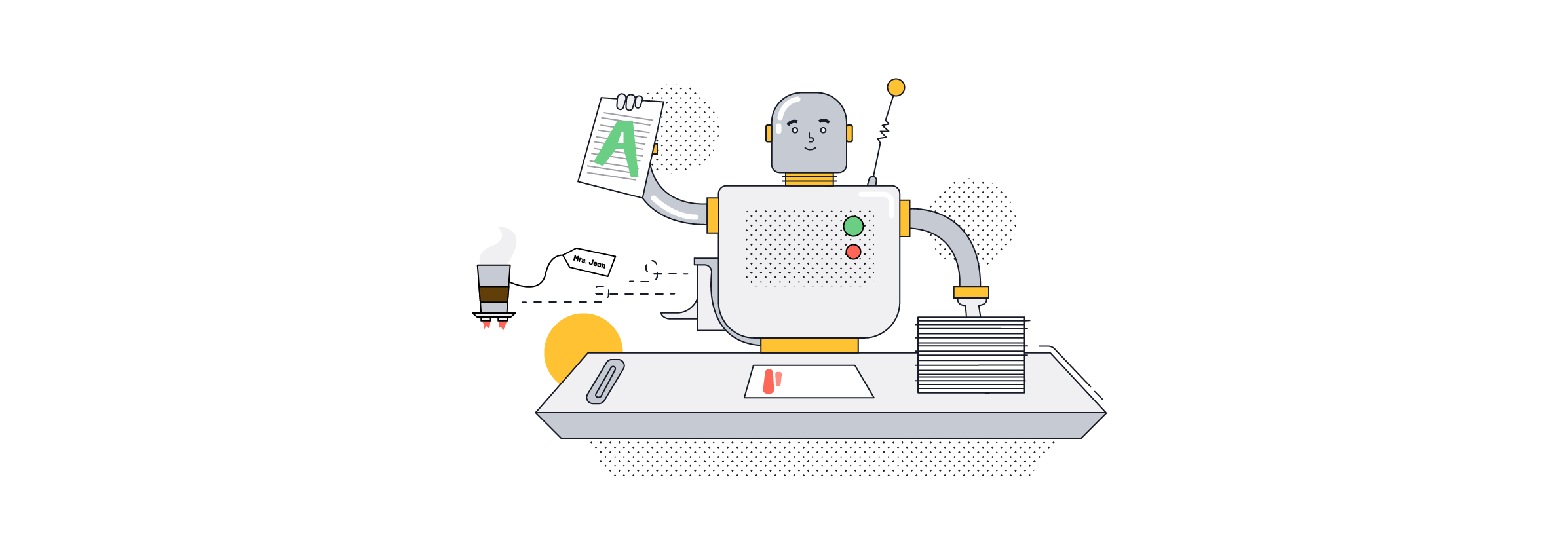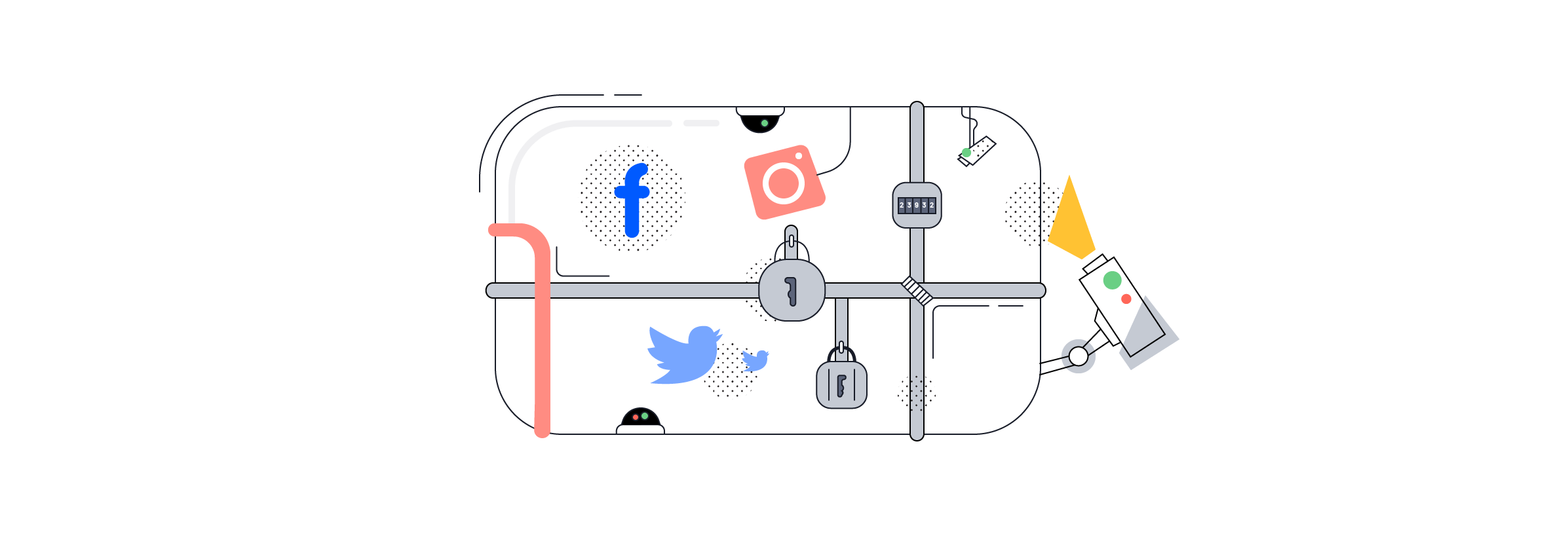What are the key educational developments that will help schools be even more innovative? We take a look at the key edtech trends in 2019
The top classroom and edtech trends in 2019

Modern learning environments improve student performance and foster creativity. That’s where edtech plays a major part because the right tech gear can support such an environment.
We are firm believers that technology has a place in the classroom and can be an empowering tool for educators.
What are the rising edtech trends and their use in classrooms? We’ve dug deep and researched the movements on the rise, and here’s how we predict classrooms changing in 2019 and beyond.
Curious for more trends? Check out our predictions of how the contemporary workspace will change in 2019.
Edtech trends
BYOD brings people together
From laptops to tablets, to smartphones and Chromebooks, schools and universities everywhere are embracing a dynamic learning environment, where students bring and use a computational device of their choice.
It’s called BYOD or Bring Your Own Device, and when schools acknowledge that the technological companions are a part of our everyday lives, it becomes easier to implement and use them to the educators’ advantage. Sourcing the best devices would come at an immense cost for schools, so a BYOD environment is a good idea to overcome that hurdle.
We believe more learning environments will increasingly embrace the BYOD trend along with exploratory BYOD-driven projects that let students participate more actively. Our wireless screen sharing solution is platform-agnostic, which means it’s well-suited for these BYOD environments too.
Freedom to roam
A more mobile environment is a more dynamic environment, and going wireless is one step educators can take towards a more dynamic learning space. Educators can operate their laptop or tablet from anywhere in the room with wireless AV gear, like Airtame.
In a more dynamic environment, educators become more flexible, allowing them to instruct to the class and help individual students at the same time. It’s an area we’re definitely going to see more schools exploring in the coming year.

Safety through signage
Ensuring a safe and secure campus is no easy task, but digital signage may be the answer. Digital signage will enable instructors to update emergency alerts in real-time. Emergency messages could include wayfinding, information updates, and procedures.
Good thing is that many schools might not even have to invest in a lot of new gear to reap the benefits. If the school is already outfitted with displays in critical areas, it’s only a matter of acquiring the right software.
Smart classrooms become smarter
Previously, chalkboards were an integral part of the traditional classroom. Today, interactive whiteboards are the new standard along with a list of other smart solutions. These smart solutions give educators a lot more freedom – and probably also time.
We’re at a point now where teachers can do automated attendance, share content instantly with students, and not have to stay tethered to the front of the classroom. It brings about more interaction, not only student to teacher but student to student as well.
Luckily, many of these smart solutions are becoming more affordable and easy to access even for schools on a tighter budget. Besides that, the evolution of smart technologies for the classrooms is still on the rise, so we will definitely see more of them implemented in 2019.
Teaching trends
The benefits of gamification
A smart classroom puts students at the center and connects them to the space itself via their laptops, smartphones, and tablets. It’s called “active-learning classrooms” (ALC), and more schools are implementing these smart learning spaces.
In an ALC, students are more actively engaged, they participate through discussions and reflections rather than being only passive listeners. ALCs are on the rise, and we think more schools will put an emphasis on that.
Another way to make the learning environment more active is to introduce gamification. Gamification ensures a certain level of interaction from students and in some cases heightens comprehension rates because the games can be tailored to the individual class or student. Read about more benefits here.

More classrooms are going “green”
The modern classroom not only focuses on edtech and active learning solutions; it’s also sustainable and eco-friendly. Of course, not every classroom will immediately be able to adopt a sustainability program, but there are several things instructors can do to make simple and efficient changes.
It’s called “The three Rs”: reduce, reuse, and recycle. With so many technological advances, reducing waste shouldn’t be so challenging, seeing as we’re already connected to cloud platforms and sharing a lot of content online. A lot of the work that has previously been done on paper can easily be transferred to computers.
The key to implementing a more “green” structure is a supportive administration in the school, and a city-wide infrastructure. Recycling at school becomes easier if students are already recycling at home and ditto for their parents at work.

Robotics and coding are not as alien as they sound
Coding shouldn’t be limited to a special type of learner. Today, everyone can benefit from learning how technology works and how it works with the wider world.
Teaching coding and robotics in the classroom is a brilliant idea that helps stimulate computational thinking.
With our online presence being so dominant in the Digital Age, we believe teaching coding activities, programming, and robotics will help prepare students for the modern, technological world. Coding could soon become a new mandatory ‘language’ in school.
Recognizing the individual
Each student is different, and so is their style of learning and interest in various subjects. Advanced, technology-assisted instructions allow for more personalized learning. Educators already have a good idea what each student’s preferences are like, and with the right tools, they’ll be able to tailor the learning experience to exactly fit the needs and interests of the individual, making learning more fun – and a lot more effective.
Personalized learning is especially beneficial for special needs students with impairments that would cause them issues in a traditional setting. With adaptive and personalized learning, kids with hearing or visual disabilities, dyslexia or anxiety can have tools to express themselves in a way that’s suitable for them.
Drive learning analytics with AI
AI isn’t a replacement of human intelligence, it’s more a support tool that can be very helpful for instructors. For example, the data collected in classrooms can be used to tailor the learning experience going forward – and what works best with the set of students in front of the instructor.
AI could mean automated grading, which in turn means more time for other things. AI could also mean better and more immediate feedback for students, better research, and a better understanding of each student’s individual need.

Classroom culture trends
Focus on ethics, data, and privacy
Data protection needs to be top of mind in 2019 if it isn’t already. Just as we share data involuntarily all the time, so do students.
It’s not just important for the younger kids in school, older pupils and instructors need to be mindful of how they use their data – and when they’re protected.
The same goes for the online presence we inevitably all have. We think schools will play a more active role in addressing responsible technology use and online behavior.

Collaborative learning
In an ALC, collaborative learning is very much encouraged. It means an environment where students are encouraged to work together to solve problems and reflect on the topics presented.
Through project-based learning, gamification, and sharing content, students can participate more freely. Students can more easily find their own voice in the classroom in a collaborative environment and thereby figure out how they learn best and what they still need some support with.
Learning is for teachers too
It’s no use trying to implement fancy new technologies if the instructors don’t feel comfortable using them, so the right training can make all the difference.
AV gear should support the instructor’s teaching efforts by making their presentations effective and easy to understand. Instructors need to be educated enough that AV tools can be put to good effect.
The right training will strengthen the instructors’ skills in making their teaching process effective, attention-grabbing, and interesting. And if done right, it will foster more collaboration because students will be able to weigh in on the content shown. That’s why, even before looking into AV gear, schools should have a plan for how to prepare their educators.

Smarter classrooms are more inclusive
Each student is unique but most curriculums are not. It’s extremely challenging for an educator to come up with personalized learning tools for each and every student. That’s where the right technology can be of help.
Not only will smart technologies free up time that the teachers can then spend on supporting their students, they also help support students in finding out what their strengths are and how best to apply them throughout their education.
Airtame is such a tool, and it can help encourage many of these trends as it brings both students and teachers together in presenting when and where they want. For the uninitiated, take a look at the opportunities of Airtame in this quick video (or watch the longer Airtame for education demo here).
Did we miss anything? What do you think is in store for edtech trends in the coming year? We speak to hundreds of educational institutions every year, and we’d love to hear from you too.